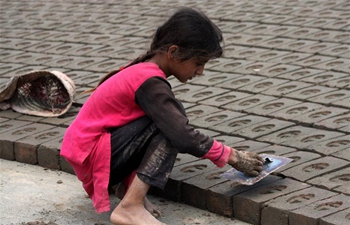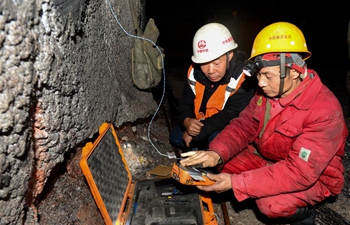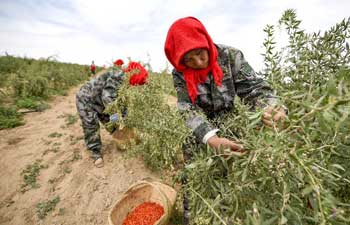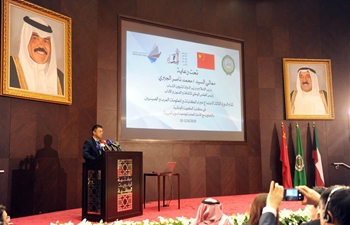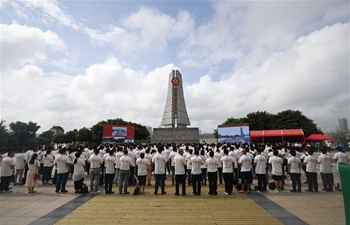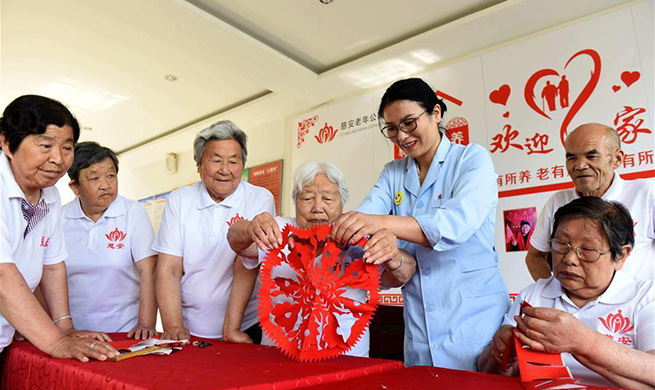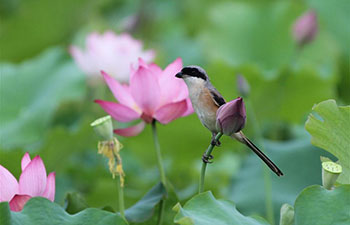by Xinhua writer Wang Jiangang
UNITED NATIONS, June 12 (Xinhua) -- It was sunny and warm on Wednesday, but a special sapling dedication ceremony held at the United Nations headquarters in New York dragged people's memories back to the heinous Holocaust.
The sapling was grown from a cutting taken from the living horse chestnut tree that grew outside the hiding place of Anne Frank, a teenager whose own tree of life was snapped off abruptly in the horrendous Holocaust, in which 6 million Jewish were slaughtered.
Speaking on behalf of UN Secretary-General Antonio Guterres, Undersecretary-General for General Assembly and Conference Management Catherine Pollard told the crowd of people standing on the north lawn of the UN building, "This sapling is a living symbol of both the legacy of Anne Frank and the values that the United Nations embodies."
"The tree gave a hope and comfort," said the newly appointed undersecretary-general.
The sapling "will stand as a beacon of hope, a living reminder of the importance of continuing the work for a just and peaceful world in which we celebrate diversity," she added.
Anne Frank was a Jewish girl living in Amsterdam during World War II. She went into hiding from the Nazi Germans, who occupied the Netherlands at that time. Anne and her family were later betrayed and deported to Germany. She died in 1945 at the age of 15 in the Bergen-Belsen concentration camp.
Her diary was found after the war and became one of the most read books in the world. It is included on the World Heritage List of documents of UNESCO, the cultural organization of the United Nations.
Discovered in the attic in which she spent the last years of her life, Anne's remarkable diary has become a world classic -- a powerful reminder of the horrors of war and an eloquent testament to the human spirit.
Karel Jan Gustaaf van Oosterom, permanent representative of the Kingdom of the Netherlands to the UN, told Xinhua that the day is "a very special day" for the Netherlands, because Anne Frank would have been happily celebrating her 90th birthday if she were still alive.
"When it blossoms, when it gets stronger, (the tree) will again be a very strong voice for peace and justice in the world," the ambassador said emotionally.
Sharon Douglas, CEO of the New York-based Anne Frank Center for Mutual Respect, whose organization helped in the initiative, told the crowd about the unheard story about the sapling.
In 2010, the 250-year-old tree was breathing its final breath, the Frank family cut it down and made small saplings and distributed them throughout the world.
The United States was given 20 of them, and the Anne Frank Center for Mutual Respect sent out inquiries to large institutions asking them if they would embody the mission of Anne Frank, such as "working for social justice, working against racism and teaching children about prejudice and hatred."
"We saved one for the United Nations, and for Anne Frank's 90th birthday," she said.
"Here it embodies what Anne Frank stood for unity," she said, with the small sapling, some five feet tall, standing firmly behind her, with two sticks supporting it.
"The inception of the United Nations was a direct consequence of the suffering of millions of people, millions of Anne Franks trapped in the brutal grip of Nazism and Fascism during World War II," Douglas told Xinhua.
"Today's dedication is part of the year-round program of Holocaust remembrance and education organized by the Holocaust in the United Nations Outreach Programme," said Alison Smale, undersecretary-general for global communications, who presided over the ceremony.
She said the program seeks to "encourage youth to learn about the lessons of the Holocaust, to stand up against discrimination, and to defend democratic values in their communities."
Young people should be equipped with the skills to challenge hatred and prejudice, and to become constructive participants in building a peaceful, equal and sustainable world, said Smale, who put on a solemn face while the flags of UN member states were fluttering in summer breeze.




